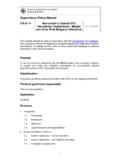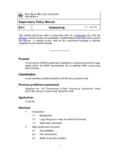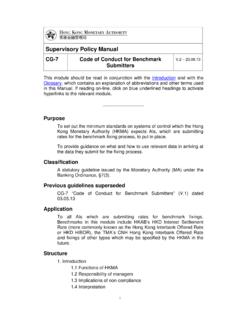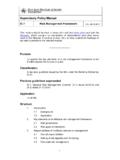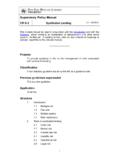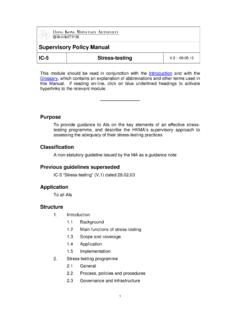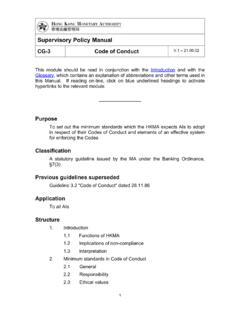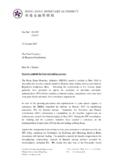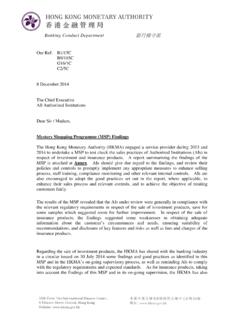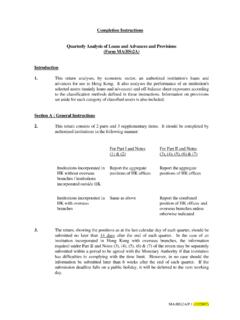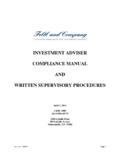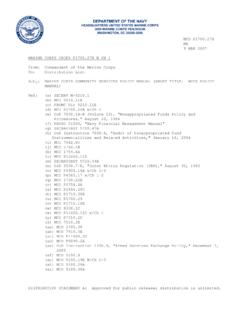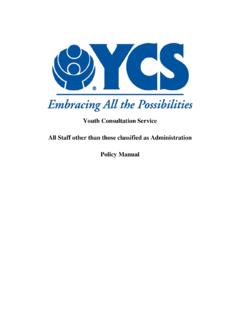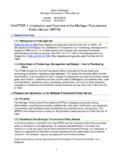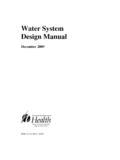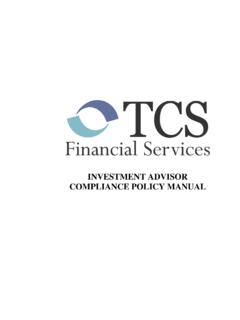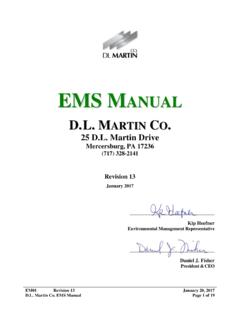Transcription of Supervisory Policy Manual
1 Supervisory Policy Manual TM-E-1 Risk Management of E-banking This module should be read in conjunction with the Introduction and with the Glossary, which contains an explanation of abbreviations and other terms used in this Manual . If reading on-line, click on blue underlined headings to activate hyperlinks to the relevant module.. Purpose To provide guidance to AIs on the risk management of e-banking Classification A non-statutory guideline issued by the MA as a guidance note Previous guidelines superseded Circular Suspected ATM fraud cases dated TM-E-1 Supervision of E-banking ( ) dated Circular Strengthening Security Controls for Internet Banking Services . dated Circular Precautionary Measures against Fake E-mails or websites . dated Circular Implementation of two-factor authentication dated Circular Capacity planning for Internet banking and/or online securities trading services dated Circular Examinations on System Capacity and Contingency Planning for On-line Securities Trading Services dated Circular Strengthening Security Controls for Internet Banking Services.
2 Dated 1. Supervisory Policy Manual TM-E-1 Risk Management of E-banking Circular Risk Management Controls over Internet Banking Account Aggregation Service dated Circular Strengthening Security Controls for Automatic Teller Machine (ATM) Services dated Circular Online Behavioural Tracking dated Application To all AIs Structure 1. Introduction Background Types of e-banking Supervisory objective and approach Applicable risk management principles 2. Major risks inherent in e-banking Operational risk Reputation and legal risk Risks associated with underlying financial services 3. Risk governance of e-banking Board and senior management oversight Accountability and staff competence in the three lines of defense Independent assessment and penetration tests 4.
3 Customer security Administration of Internet banking accounts Authentication of customers 2. Supervisory Policy Manual TM-E-1 Risk Management of E-banking Notifications sent to customers Security advice for customers Customer protection 5. System and network security for Internet banking Confidentiality and integrity of information Internet infrastructure Application system security Threat monitoring and vulnerability assessment 6. Controls related to services offered via Internet banking or the Internet Funds transfers Online submission of information Account aggregation service Provision of other online financial services 7. Security controls in respect of specific e-banking channels Internet banking accessed via mobile devices Internet banking accessed via social media platforms or other portals Self-service terminals Phone banking Contactless mobile payments 8.
4 Fraud and incident management Fraud monitoring and continuous intrusion detection Incident response and periodic drills 9. System availability and business continuity management Service level of e-banking for customers 3. Supervisory Policy Manual TM-E-1 Risk Management of E-banking Capacity planning Performance monitoring System resilience Controls for coping with system disruptions Annex A: Items to be reported in independent assessment Annex B: Controls related to account aggregation service Annex C: Examples of precautionary measures before and during scheduled system maintenance or drills 4. Supervisory Policy Manual TM-E-1 Risk Management of E-banking 1. Introduction Background As the banking industry is increasingly making use of technology to deliver services to customers, this module aims to consolidate and update all relevant guidance issued by the HKMA on the sound risk management principles and practices applicable to AIs'.
5 Electronic banking services ( e-banking as further described in subsection below). This module has taken into account latest developments in the banking industry and in relevant technologies as well as Supervisory guidance used in other major jurisdictions so as to facilitate the further development of e-banking in Hong Kong while also enhancing the industry's risk management controls in this area. Types of e-banking For the purpose of this module, e-banking refers to financial services (which could be transactional, enquiry or payment services) provided to personal or business customers and delivered over the Internet, wireless networks, automatic teller machines (ATMs), fixed telephone networks or other electronic terminals or devices. Accordingly, e-banking includes: (i) Internet banking 1.
6 (ii) contactless mobile payments 2 ; (iii) financial services delivered through self-service terminals 3; and 1. Internet banking refers to financial services delivered over the Internet to customers' devices including personal computers (including desktop computers, laptop computers and notebook computers), mobile devices such as smartphones or tablet computers (other than laptop computers), or other devices. 2. Contactless mobile payments refer to the use of contactless or wireless technology ( Near Field Communication (NFC) technology) to transmit payment transaction information ( credit card information) between the customer's mobile device and the payee ( a merchant). 3. Self-service terminals refer to interactive terminals (including ATMs, cash deposit machines (CDMs), cheque deposit machines and virtual teller machines) which are used by AIs to provide financial services.
7 5. Supervisory Policy Manual TM-E-1 Risk Management of E-banking (iv) phone banking 4. Except for certain guidance in this module on the notifications to be sent to customers regarding Card-Not-Present (CNP) credit card transactions (see subsection below), this module does not cover other controls for managing the risks associated with AIs' credit card business (see in this regard CR-S-5 Credit Card Business ). This module also does not intend to cover controls related to electronic terminals provided to merchant clients by merchant acquiring AIs, although some control practices in this module may also be relevant to addressing the risks associated with those services. Further, services 5 where AIs allow customers to send their instructions ( funds transfers to third-party payees) through emails or faxes are not covered because such services should not be regarded as e-banking.
8 Supervisory objective and approach The HKMA's Supervisory objective is to promote a safe and transparent regulatory environment for e-banking, thereby maintaining public confidence in e-banking at large and fostering its further development. In this connection, the HKMA works periodically with the banking industry to develop sound risk management principles and practices that are technologically neutral and commensurate with the associated risks of e-banking in order to mitigate the risk of fraud as well as other key risks. The HKMA adopts a risk-based Supervisory approach (see also SA-1 Risk-based Supervisory Approach ) to 4. Phone banking refers to banking services provided through fixed telephone line or mobile telecommunication network, covering both manned and Interactive Voice Response (IVR) phone banking services.
9 For the purpose of this module, phone banking does not include the provision of banking services, over fixed telephone or mobile telecommunication networks, for the purpose of sales promotion or activity notification/call-back confirmation, or by a designated staff member ( a relationship manager) who knows the relevant customer very well. 5. In such cases, AIs should implement stringent controls for detecting and preventing any associated frauds (see the HKMA's circular of 5 June 2014 Control measures for guarding against some recent fraud cases ). 6. Supervisory Policy Manual TM-E-1 Risk Management of E-banking assess AIs' risk management practices. In particular, the HKMA will undertake onsite examinations or perform various off-site Supervisory reviews and activities to assess how AIs manage the risks of e-banking.
10 Applicable risk management principles Given that e-banking involves the delivery of financial services through technological means, both general risk management principles applicable to the provision of the underlying financial services and typical technological controls are applicable to e-banking. This module does not repeat the HKMA's general guidance in these areas but rather elaborates on how the relevant risk management measures may be applied or refined in the case of e-banking for different types of customers 6. AIs should use a risk-based approach to managing the risks associated with e-banking. In this connection, AIs should not only make reference to this module but also other relevant Supervisory Policy Manual modules and HKMA guidance issued from time to time.
